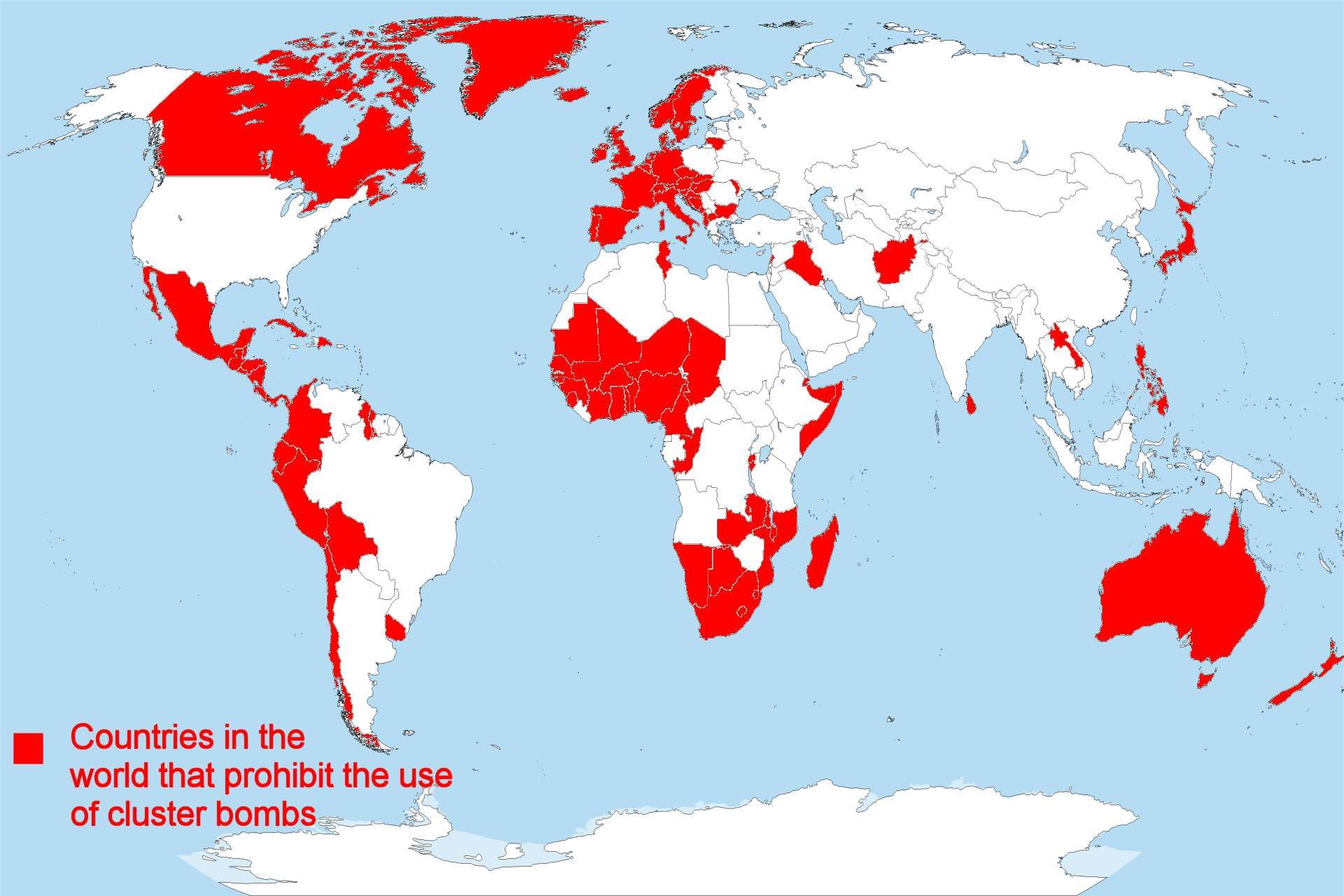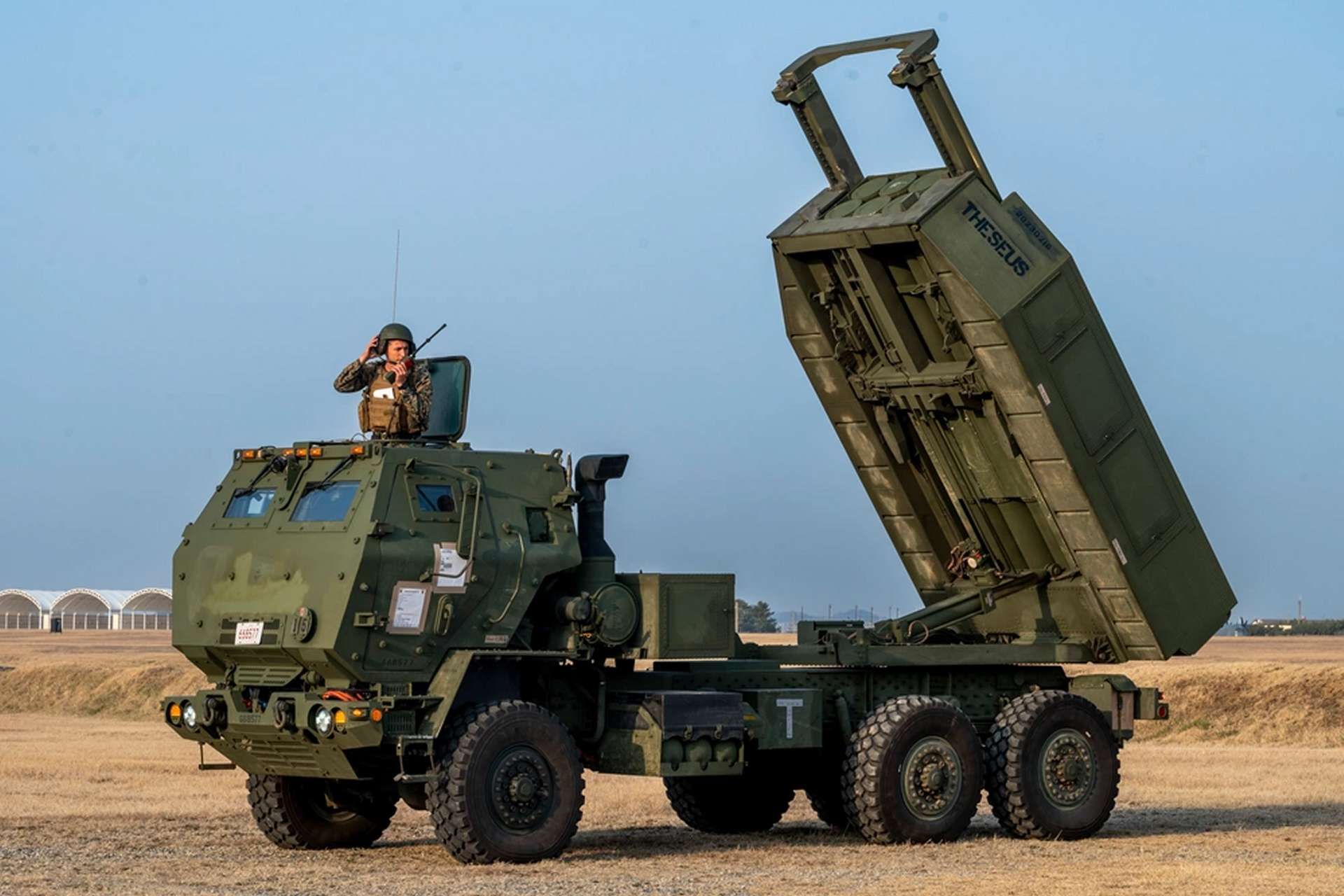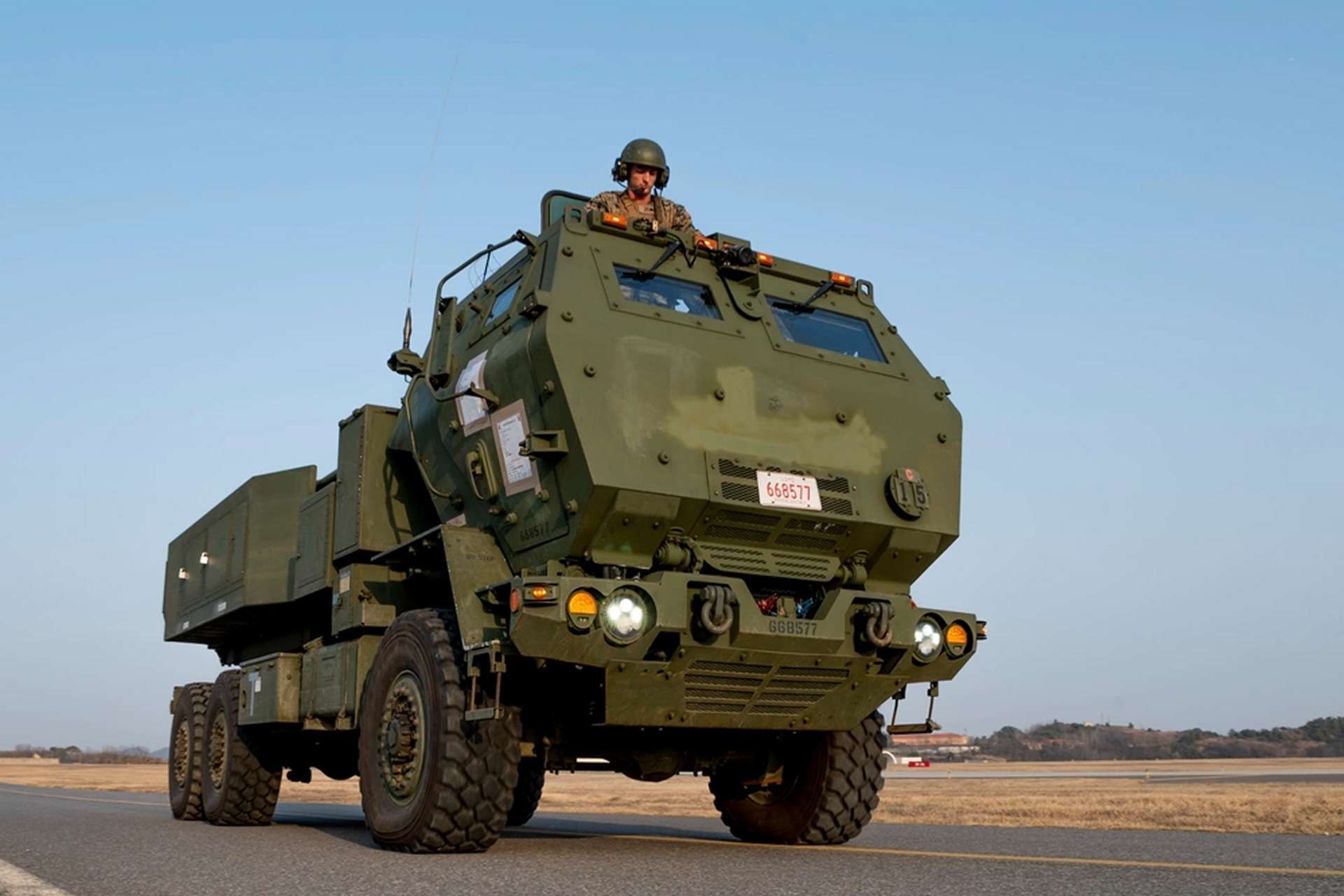Breaking News
Ukrainian HIMARS Strike Hard with Cluster Bombs Against Russian Troops.
The use of HIMARS artillery systems by Ukraine remains as effective as ever, as evidenced by a recent video shared on social media showing a Russian training camp in Ukraine hit by a cluster bomb. These already powerful weapons have shown increased effectiveness in precision operations, underscoring their strategic role on the battlefield.

The HIMARS, or High Mobility Artillery Rocket System, is a high-mobility artillery system developed by the United States. (Picture source: Social Media)
What is a Cluster Bomb?
Cluster bombs are munitions dropped or launched that release numerous small projectiles, or submunitions, scattered over a wide area upon impact. Designed to maximize damage to multiple targets, they are particularly effective in areas with concentrated enemy military forces, infrastructure, light vehicles, or, as in this instance, a training camp. However, they pose a significant risk to civilians and military personnel due to the failure rate of some submunitions, which may not explode immediately and remain on the ground like landmines.
Why Are These Munitions Problematic?
The use of cluster bombs has attracted international criticism because of the risks they present to civilian populations. According to statistics, up to 40% of submunitions may not explode immediately, creating long-term hazards. This type of munition is banned under the Convention on Cluster Munitions, a treaty that neither Russia nor Ukraine has ratified, but which nonetheless raises serious humanitarian concerns.

Map of countries that prohibit the use of cluster bombs. (Picture source: Army Recognition)
What is a HIMARS?
The HIMARS, or High Mobility Artillery Rocket System, is a high-mobility artillery system developed by the United States, optimized for rapid and precise operations on the modern battlefield. Armed with six rockets from the MLRS series or one ATACMS tactical missile, it offers flexibility in the choice of munitions based on the mission, whether for short- or long-range strikes. The HIMARS can fire at ranges of up to 45 km with ER-MLRS rockets, 70 km with new GMLRS guided rockets, and up to 300 km with tactical missiles, giving it significant strategic reach over a broad range of distances.
Used by several nations, including Australia, Canada, Estonia, Finland, Jordan, Latvia, Lithuania, Poland, Romania, Singapore, Ukraine, the United Arab Emirates, and, of course, the United States, the HIMARS is recognized for its reliability and effectiveness across various militaries. Its robust design includes NBC (nuclear, biological, and chemical) protection, a white searchlight for night visibility, and an integrated heating system, allowing for optimal deployment in diverse combat environments.
With a three-person crew, the HIMARS is also armored against small arms fire and shell fragments. Weighing 10,886 kg, the vehicle can reach a maximum speed of 85 km/h on roads, ensuring both effective mobility and responsiveness on the battlefield. Compact, with a length of 5.046 meters, a width of 2.16 meters, and a height of 2.251 meters, it is easily transportable and deployable in the field, offering military forces a powerful mobile artillery solution adaptable to operational needs.

The HIMARS can be armed with six rockets from the MLRS series or one ATACMS tactical missile. (Picture source: US DoD)
How Many HIMARS Are in Service in Ukraine?
Ukraine currently has about 20 HIMARS units, provided by the United States as part of military aid since the beginning of the conflict. This number allows Ukrainian forces to cover extensive areas while remaining mobile enough to avoid counter-fire from enemy artillery.
However, given their effectiveness in combat, Ukraine continues to request additional units. Notably, Ukraine has expressed interest in ATACMS missiles, which have also proven to be highly effective; however, the U.S. has been reluctant to supply these missiles. Additionally, the United States has not yet permitted the use of ATACMS to strike Russian territory.

Ukraine currently has about 20 HIMARS units. (Picture source: US DoD)
Operational Use of HIMARS
In Ukraine, HIMARS is primarily used to strike strategic targets such as ammunition depots, command centers, and now, with cluster bombs, troop gathering points. Paired with cluster bombs, HIMARS can extend their impact coverage and eliminate multiple targets simultaneously.
A Devastating Efficiency
Though controversial, this combination of precision and destructive power amplifies the impact of HIMARS on the battlefield. These mobile artillery systems, already formidable, continue to play a crucial role in Ukraine's defensive and offensive strategies. This recent attack on a Russian training camp is just one example of their effectiveness among many others.
SHARK + HIMARS роблять смерть ворогам 🔞
— Повернись живим (@BackAndAlive) October 16, 2024
В результаті колаборації 128-ї гірсько-штурмової бригади та бригади «Чорний ліс» на Півдні стало на десяток-півтора менше окупантів 🫶
Виявити ворога допоміг розвіддрон, який ми купили за ваші донати 🫡 pic.twitter.com/kxosdLtgws


























